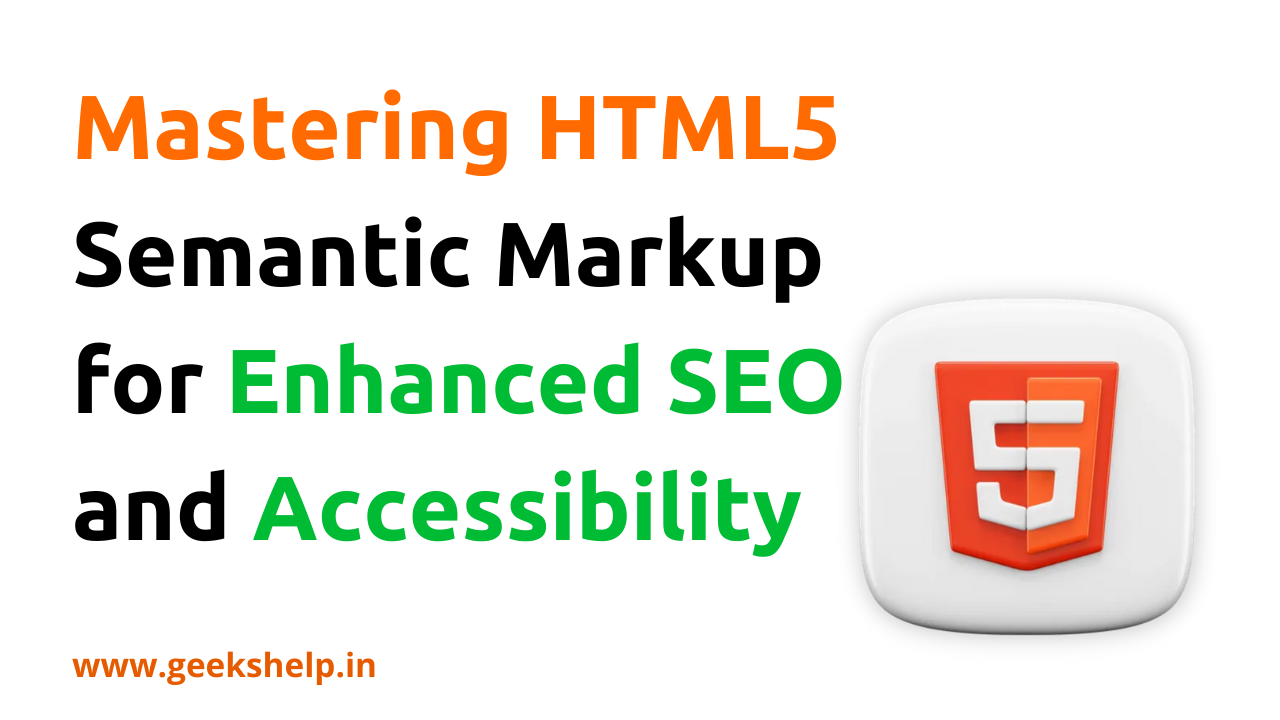In today's digital world, creating a website which is Search Engine Optimized (SEO) and Accessible to All Users is crucial for success. To ensure that your website is accessible to all users and performs highly in search results, HTML5 Semantic Markup offers an effective toolbox for achieving these goals.

What is Semantic Markup in HTML5?
HTML5 Semantic Markup is a coding practice which involves using HTML elements to convey the meaning and structure of a website's content, rather than just its presentation. In other words, semantic markup is about using HTML tag which represent the meaning of their content with tags. In this approach we generally replaces generic tags like <div> with meaningful tags like <header>, <nav>, <article>, and <section>. Where <header> is used for header section, <nav> is used for navbar, <section> is used for particular section and so on.
Benefits of HTML5 Semantic Markup for SEO
Semantic markup helps search engines like Google to identify the context and importance of content on websites. Semantic markup gives search engines full details about the content of your pages, which makes it easier for their crawlers to index and properly rank your website. This may result in improved search engine results and increased organic visitors to your website.
Benefits of HTML5 Semantic Markup for Accessibility
Semantic markup also plays a big role in ensuring the website accessibility for people with disabilities. When HTML elements accurately convey the meaning of content, assistive technologies like screen readers can effectively interpret and present the information to users with visual impairments. This promotes inclusivity and ensures that everyone can access and read data from your website.
How to Master HTML5 Semantic Markup
To Master HTML5 Semantic Markup involves understanding the purpose and use of various semantic tags, as well as following best practices for structuring and organizing content. Here are some key points to get started:
i) Identify the purpose of each page: Before writing HTML, clearly define purpose of each page on your website. It will guide your choice of semantic tags and ensure the content is properly structured.
ii) Use the right semantic tags: Choose the appropriate semantic tags for each section of your page, like as <header> for header section, <nav> for navigation menus, <article> for blog posts/articles, <section> for distinct sections of content and so on.
iii) Structure content logically: Organize your content so that it follows the natural flow of information. Use heading tags (h1>, h2>, etc.) to determine the hierarchy of information and make navigation easier for users.
iv) Use descriptive text for links: Instead of generic link text like "Click Here" or "Tap Here" use descriptive text which accurately convey the destination of the link. Like "Download Now", "Login", "Signup" and more. This will improve the user experience and SEO.
v) Validate your markup: Validate your HTML code on a regular basis to guarantee it follows the W3C standards and best practices. This prevents errors and improves accessibility.
If you follow these guidelines and consistently use HTML5 Semantic Markup, you can create a website which is SEO-friendly and Accessible to all users, it will enhance your online presence and help you to reaching a wider audience.




